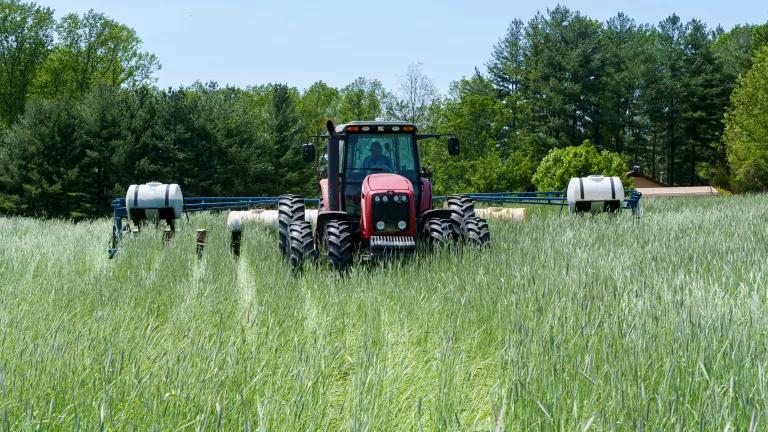Pharming Chickens: It's Time For The U.S. Poultry Industry to Demonstrate Antibiotic Stewardship
Over the past 50 years, as poultry farms became larger and more concentrated, farmers began using antibiotics to prevent disease and speed growth in broiler chickens (chickens raised for meat) living in these crowded and stressful conditions. The industry today remains dependent on their widespread use, and antibiotics are frequently given to birds that are not sick. When antibiotics are routinely given to entire flocks, resistant bacteria are likely to survive and proliferate. These resistant bacteria can even share resistance genes with other bacteria. A large and growing body of evidence shows that antibiotic-resistant bacteria are frequently found on poultry products and in the air and water around poultry facilities and can be carried by poultry workers as well. These bacteria can cause foodborne illness and other types of bacterial infections. Ailments caused by drug-resistant bacteria can be harder to treat—patients can be subject to longer hospital stays, complications, and even death if treatment fails. The Centers for Disease Control and Prevention and many other health authorities have sounded the alarm about rising rates of antibiotic resistance, pointing to overuse and misuse by livestock producers and in human medicine as the cause of this dangerous problem. It's time for the poultry industry to demonstrate stewardship of these important medicines, and help protect their effectiveness for humans.
The good news is that there are proven alternatives to the routine use of antibiotics. A combination of practices such as water acidification; use of prebiotics, probiotics, and other feed additives; improved sanitation and litter management; use of vaccines; improved genetics; and lower bird densities, among others, are effective at preventing disease and reducing the need for antibiotics. Several studies indicate that nontherapeutic uses of antibiotics in U.S. broiler production can be avoided at a cost of pennies per pound of chicken produced.
Antibiotics should be used sparingly in poultry production to treat sick animals and, in rare circumstances, for controlling disease outbreaks. They should always be used under the supervision of a veterinarian, and never to make up for poor growing conditions. Congress and the Food and Drug Administration (FDA) should issue binding regulations to protect antibiotics used in human medicine, and producers and large buyers of poultry products should commit to standards in line with that goal. Consumers should also consider antibiotic use in their purchasing decisions. Poultry producers, policymakers, buyers at large food companies, and consumers must all take action to ensure that these medicines are used safely.



